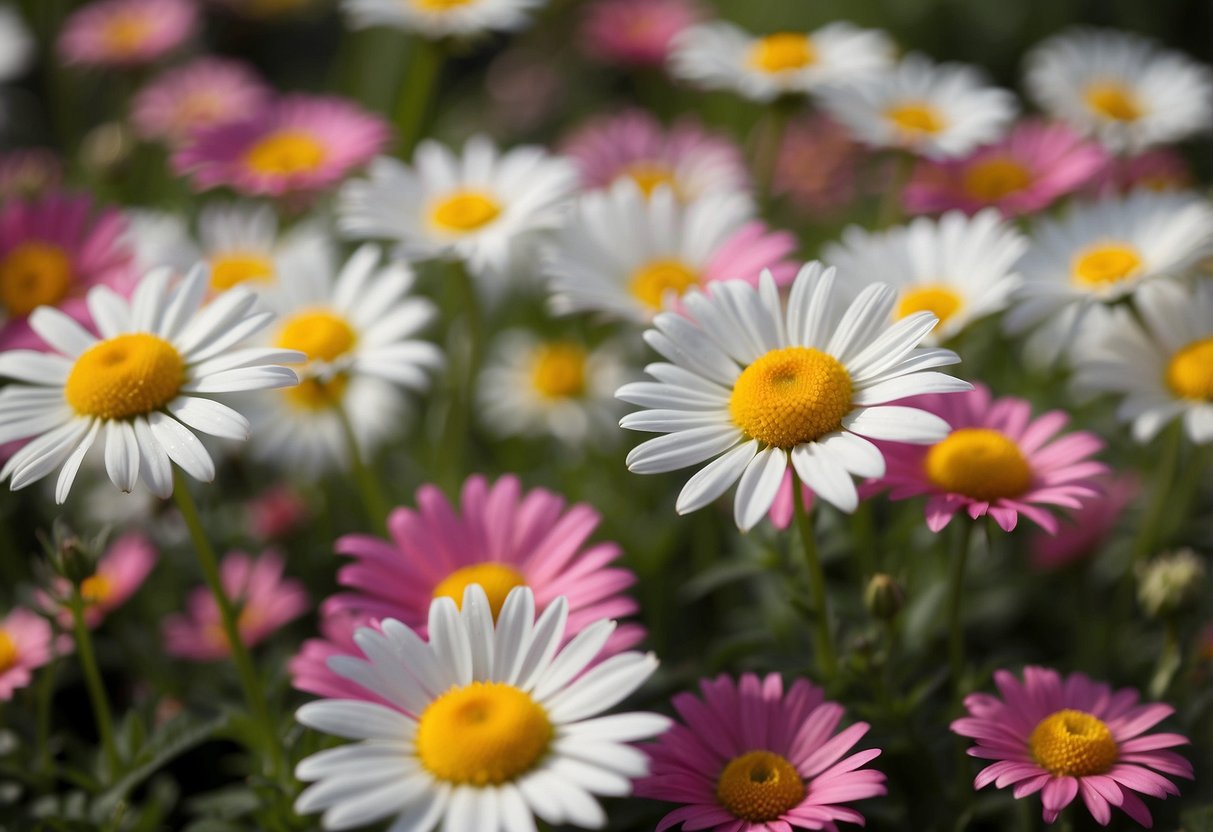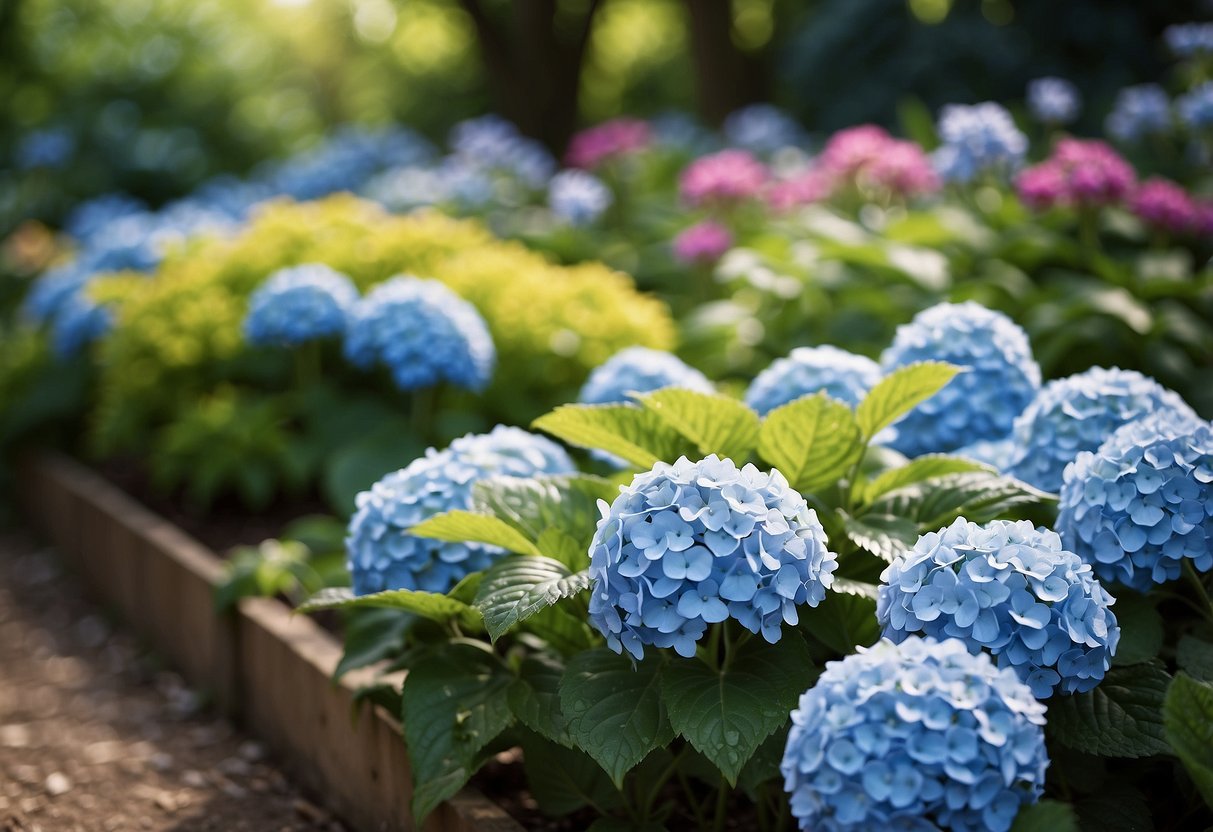Garden Flower Bed Ideas: Creative Tips to Brighten Your Outdoors
Thinking about sprucing up your garden with some beautiful flower beds? Whether you have a small yard or a large one, there are countless ways to add color and charm to your outdoor space. Creating a stunning garden flower bed doesn’t have to be complicated or expensive.

With a little creativity and some basic gardening knowledge, you can transform any area into a vibrant, blooming oasis. You’ll discover a variety of ideas that can fit your style and taste, making your garden a delightful place to spend time in.
1) Lavender Blooms

Lavender blooms bring a touch of purple magic to any garden. Their vibrant color stands out, creating a beautiful focal point.
Lavender is not just pretty to look at; it also has a lovely fragrance. This aroma can make your garden feel like a peaceful retreat.
Plant lavender along paths or beside stone walls for a classic look. Their hardiness helps keep weeds at bay and adds structure to your flower beds. For more ideas on how to use lavender, check out these landscaping tips.
2) Sunflower Path

Imagine walking through your garden with bright sunflowers on each side. A sunflower path can make this come true.
Planting sunflowers next to your garden paths creates a cheerful and lively walkway. Their tall, bright blooms act as natural guides, leading you through the landscape.
You can also mix different varieties, like red and yellow sunflowers, to add more color. This will make your garden even more beautiful and inviting.
3) Daisy Carpet

Create a beautiful and cheerful look in your garden with a daisy carpet. Daisies are easy to grow and maintain.
Plant them close together for a dense, colorful ground cover. Their small, white petals with yellow centers brighten up any space.
This simple yet charming flower bed idea works well along pathways or around patios, inviting you to enjoy nature’s beauty every day.
4) Hydrangea Corners

Hydrangea corners can add a burst of color to your garden. Their large, beautiful blooms are perfect for creating vibrant focal points.
For best results, plant hydrangeas where they get morning sun and afternoon shade. This will help them thrive and produce more flowers.
Mix in some foliage plants like hostas to complement the hydrangeas. This enhances the overall look of your garden space. Consider creating a cozy seating area near your hydrangea corner to enjoy its beauty up close.
5) Tulip Rows

Tulip rows can make your garden look neat and orderly. Planting tulips in straight lines is easy and visually appealing. Space them evenly about six inches apart.
Choose a color scheme that suits your garden. Single-color rows can look elegant, while different colors in alternating rows can add vibrancy. Ensure they get at least six hours of sunlight daily.
For a more formal appearance, plant tulips in symmetrical patterns or parallel lines. This can create a structured and polished feel. Adding mulch between the rows can also help keep weeds away and retain moisture.
6) Roses Harmony

Planting roses can create a peaceful and lovely space in your garden. Mix different types of roses to have various colors and shapes.
Add some greenery, like ferns or hostas, to highlight the beauty of your roses. This creates a balanced look and adds texture to your garden.
Keep your rose beds well-trimmed to maintain their elegant appearance.
7) Peony Patches

Peony patches bring a splash of color to your garden with their vibrant blooms. Planting a mix of red, pink, yellow, and white peonies can create a stunning visual effect.
Consider placing some potted peonies near pathways to guide the eye toward a beautiful flower bed. Pairing peonies with complementary flowers like purple or white blooms can add contrast.
For inspiration, take a look at these peony garden design ideas. You can transform your garden into a colorful oasis that neighbors will admire.
8) Marigold Borders

Marigold borders are a simple way to add vibrant color to your garden. These flowers come in bright oranges, yellows, and reds.
They attract butterflies and bees, which helps your garden thrive. For a stunning effect, plant French Marigolds along the edge of your flower beds (learn more).
Marigolds are easy to care for and can even repel some pests. This makes them both beautiful and practical in your garden.
9) Lilac Clusters

Lilac clusters can add a burst of color and fragrance to your garden. These plants thrive in sunny spots and can reach impressive heights, creating a stunning backdrop for other flowers.
You can pair lilacs with tulips to add an early spring touch or with daylilies for extended blooming. Mixing in peonies adds a rich visual contrast, making your garden more vibrant.
10) Daffodil Edging

Using daffodils as garden bed edging can create a bright and cheerful border. They bloom in early spring, adding vibrant yellow flowers to your garden.
Plant the bulbs in the fall to ensure they bloom on time. Place them about six inches apart along the garden edge.
Daffodils are also deer-resistant, making them a practical choice for your garden. Their strong scent can help keep unwanted animals away.
This natural edging option is both attractive and functional. For more creative garden bed edging ideas, check out this list.
Designing Your Flower Bed

When designing your flower bed, it’s essential to think about the location and layout. The right placement can impact your plants’ growth, while a good design makes your garden beautiful and functional.
Choosing the Right Location
First, consider sunlight. Most flowers need at least six hours of sun daily. Observe your yard to see where the sunniest spots are.
Soil quality is vital. Test your soil to ensure it’s fertile and has the right pH for your selected flowers. You might need to add compost or fertilizer.
Think about accessibility. Make sure you can easily water and maintain the flower bed. Also, consider how it fits with your yard’s overall design. A flower bed near a walkway can be a welcoming feature.
Creating a Layout
Start with a sketch. Draw your flower bed’s shape and think about what plants will go where. Use tall plants at the back and short plants at the front.
Add variety. Mix different types of flowers to create a visually appealing garden. Combine perennials with annuals for year-round color.
Also, group similar plants together. This helps with care and enhances the look. Consider adding a focal point, like a bright flower or a small garden statue.
Paths or small borders can make your flower bed stand out. Use materials like stone, wood, or metal for edging. This keeps your garden neat and defined.
Selecting Plants for Your Flower Bed

Choosing the right plants for your garden flower bed can make a big difference in its appearance and health. It’s important to consider factors like whether you want annuals or perennials, as well as the specific sunlight and soil needs of your plants.
Annuals vs Perennials
Annuals complete their life cycle in one growing season. Common choices include marigolds, petunias, and zinnias. They are great for adding quick color but need to be replanted every year.
Perennials, on the other hand, come back year after year. Popular options are hostas, daylilies, and peonies. Perennials may take a bit longer to establish but offer lasting beauty with less effort over time.
Consider mixing both annuals and perennials in your flower bed. This approach can give you the immediate burst of color from annuals while building up a strong perennial base that will return each year.
Considering Sunlight and Soil Types
Sunlight is critical when selecting plants. Some plants thrive in full sun, receiving at least six hours of direct light each day. Examples include lavender and many types of roses.
Others prefer partial shade, like hostas and ferns, which do well with only a few hours of sunlight.
Soil type also influences plant health. Test your soil to know its type, whether it’s sandy, loamy, or clay. Most plants prefer well-draining soil. If your soil is heavy clay, consider raised beds or adding compost to improve drainage.
Check the pH level of your soil, which can affect nutrient availability. Most plants do well in slightly acidic to neutral soil, but some, like hydrangeas, may require specific pH levels for optimal growth.
When considering both sunlight and soil types, choose plants that are well-suited to your garden’s conditions for the best success.
Maintenance Tips

Proper care is essential for keeping your garden flower beds beautiful and healthy. Key aspects include watering practices and seasonal maintenance to ensure lush growth all year round.
Watering Guidelines
Watering your flower beds correctly is crucial. Most flowers need 1-2 inches of water per week. Using a drip irrigation system can make this easier and more efficient.
Water early in the morning or late in the evening to reduce evaporation. This also helps prevent leaf burn. Make sure the soil is consistently moist but not waterlogged. Overwatering can lead to root rot and other problems.
During hotter months, pay close attention to the soil. It may dry out faster, requiring more frequent watering. Mulching can also help retain soil moisture and reduce the need for frequent watering. A layer of mulch, about 2-3 inches thick, is generally effective.
Seasonal Care
Seasonal changes bring different needs for your flower beds. In spring, remove any dead plant material left from winter. This helps prevent diseases and pests from taking hold.
Prune perennials and divide overcrowded plants to ensure they have space to thrive. Fertilize in late spring to give plants the nutrients they need for the growing season.
In summer, focus on keeping your flowers hydrated and watch for pests. Deadhead spent blooms to encourage new growth and extend blooming periods.
As fall approaches, cut back on watering and allow plants to enter dormancy. Trim back any dead or dying leaves and stems. Adding a layer of mulch can also help protect roots as temperatures drop.
During winter, heavily mulch tender plants to insulate them from the cold. If you live in an area with harsh winters, consider covering beds with burlap or other protective materials to guard against frost.







